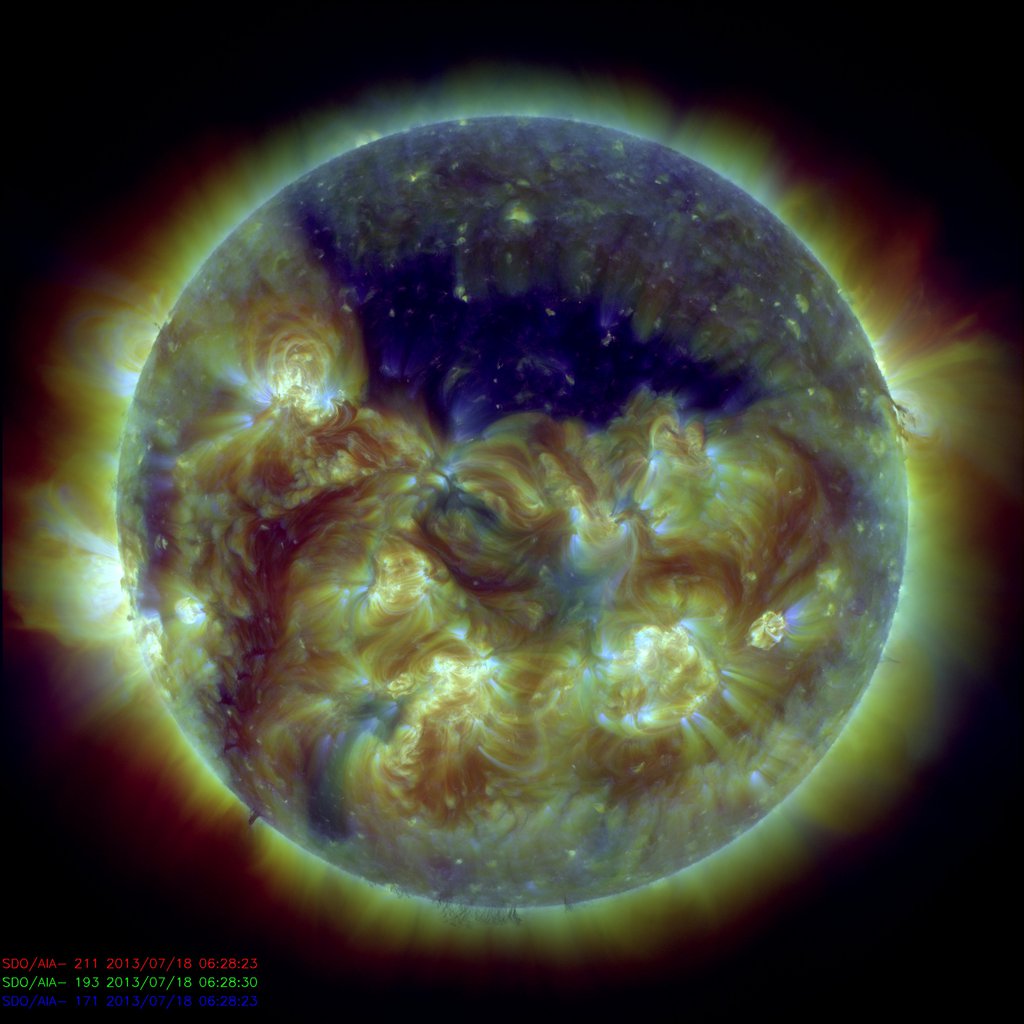Last week, the Sun's outlook was dominated by a large coronal hole (see this SDO-movie). Coronal holes are regions in the hot solar atmosphere ("corona") where the plasma density at that temperature is very low compared to its surroundings, and thus they look like dark shapes in the corona. Linked to unipolar magnetic fields stretching into space, they are the source of the high-speed solar wind and can create geomagnetic disturbances. The wider the coronal hole, the longer any effects of the high speed stream will last.

So, how big is this solar feature and how does it compare to other coronal holes? The size of a coronal hole is usually determined by measuring the area of the dark patches of which it consists. However, for reasons explained in a previous STCE Newsletter, the outlook of a coronal hole can be quite different from one filter to the other. An illustration of this effect can be seen in the SOHO-images underneath (ranked from cool to hot temperatures). This is important to keep in mind, when comparing areas over many years as observed by different spacecraft.

Just this week, the folks from Helioviewer added some new features to their renowned website. It now also contains a tool displaying the area of the visible coronal holes. Interestingly, these areas are detected from modeling the Sun's magnetic field, and not from observing a dark region in a coronal temperature bandpass. Using this method, the maximum area of this coronal hole was determined to be 150 billion km2 on 17 July, or nearly 300 times the total surface of the Earth.

Though last week's coronal hole certainly was a big one, it is not the largest coronal hole of the current solar cycle. First of all, during its previous passage in June, it was slightly larger (a total of 180 billion km2). But more importantly, several polar coronal holes have been much larger. These polar holes look smaller because of the perspective effect, but they can cover huge areas. Indeed, as recently as early July, a northern polar coronal hole was 30 billion km2 larger than this week's coronal hole. And in 2011, there were coronal holes near the south pole that were nearly twice as large (middle image underneath; SDO).

Compared to previous solar cycles, there have been even much larger coronal holes. An example is the famous "kite" coronal hole from the previous solar cycle (SOHO/EIT 284, image above right). Visible early January 2002, this trans-equatorial hole measured about 400 billion km2, or nearly 800 times the Earth's surface! A few days later, its fast 700km/s wind stream caused a brief minor geomagnetic storm.
 |
 |





